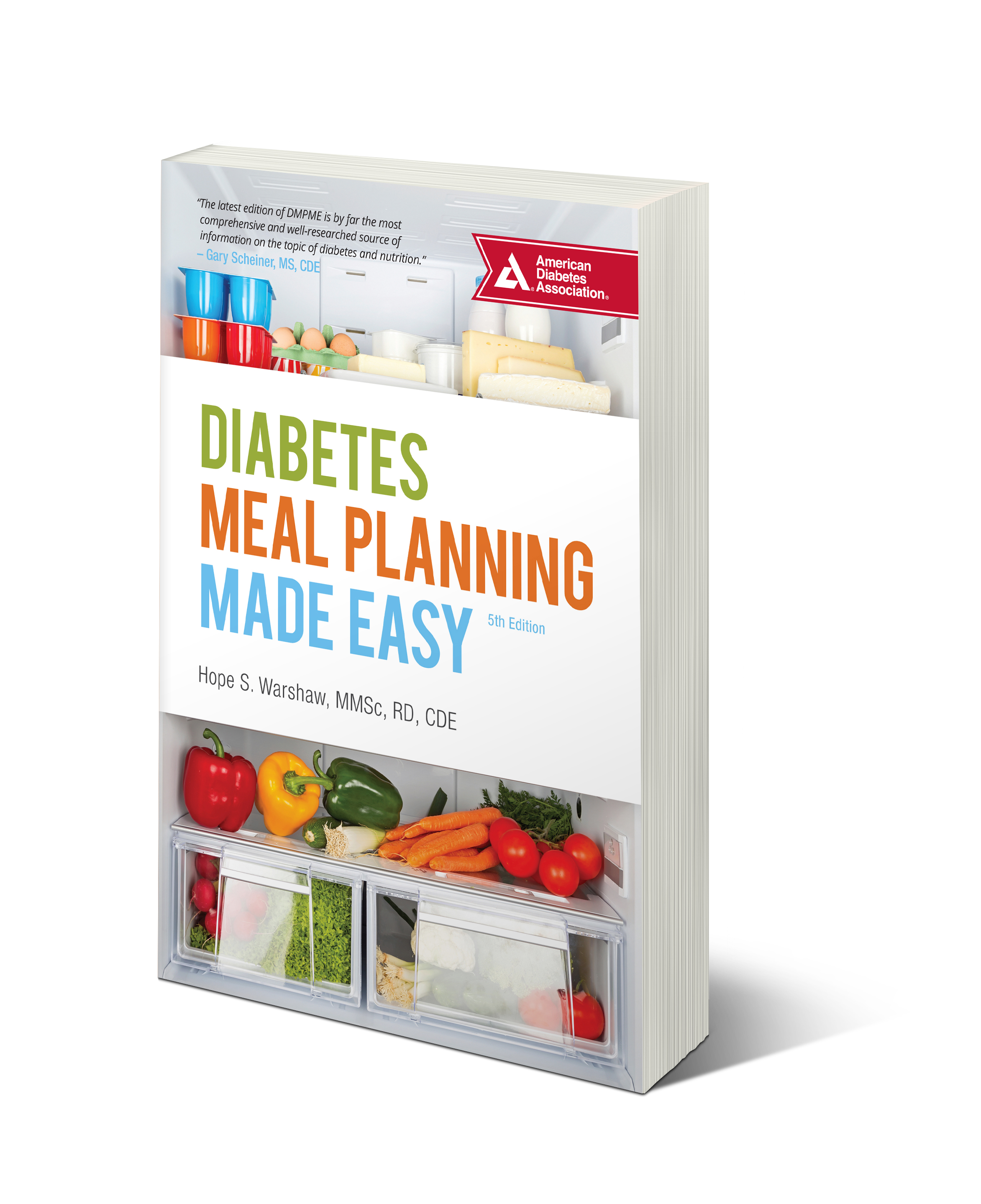Got Diabetes and Want to Try a Low Carb Diet? Here’s How to Make Your Carbs Count!
 Are you in this situation? You, a loved one or good friend, has prediabetes or type 2 diabetes. You’re constantly searching for answers to the all-important question: what and how much to eat. But you’re left scratching your head about whether following a low carb diet is a must.
Are you in this situation? You, a loved one or good friend, has prediabetes or type 2 diabetes. You’re constantly searching for answers to the all-important question: what and how much to eat. But you’re left scratching your head about whether following a low carb diet is a must.
Carbohydrate: How Much (or Not) to Munch? Dualing Dialog with Tenderich's diabetesmine.com
Warshaw dialogs with diabetesmine.com blogger Tenderich on her blog about research and recommendations about carbohydrate intake for type 1. Check it out, then read my rebuttal below. Thanks Amy for being open to dialog!
Diabetes Meal Planning Made Easy

- confused about whether you need to limit the amount of carbohydrate you eat?
- baffled by what’s more important: controlling glucose, blood pressure or heart health?
- frustrated trying to lose weightl, keep pounds off and manage diabetes?
- overwhelmed by food labels, nutrition facts and ingredients lists?
Diabetes Meal Planning Made Easy, now in its 5th edition, is thorough, yet practical and realistic in its approach. This perennial best-seller, published by the American Diabetes Association, has become the go-to resource on why, what and how much to eat for people with prediabetes or type 2 diabetes. Readers find cut-to-the-chase advice in three easy-to-digest sections. Section one is: Nutrition and Health Eating Basics. Section two is: Foods by Group, in-depth detail about each food group including alcoholic and non-alcoholic beverages, sweets and desserts and convenience foods. Section three is: Putting Healthy Eating for Diabetes Control into Action, covering how to preplan, supermarket shop, read food and nutrition labels, eat healthier restaurant meals and much more. This action oriented book helps readers slowly but surely change their food choices and eating behaviors for good.
Reviews
Table of Contents
Dedication
Introduction to 5th Edition
Section 1: Diabetes, Nutrition, and Healthy Eating Basics
- Chapter 1: About Type 2 Diabetes and Prediabetes and Why They Happen
- Chapter 2: How to Eat Healthy with Diabetes
- Chapter 3: About Calories, Carbohydrate, Protein, and Fat
- Chapter 4: Sodium, Potassium, and Blood Pressure Control
- Chapter 5: Vitamins, Minerals, and Dietary Supplements
- Chapter 6: Personalize Your Healthy Eating Plan
- Chapter 7: Secrets of Losing Weight and Keeping Pounds Off for Good
Section 2: Foods by Group
- Chapter 8: Starches
- Chapter 9: Vegetables (Non Starchy)
- Chapter 10: Fruits
- Chapter 11: Milks and Yogurts
- Chapter 12: Protein Foods
- Chapter 13: Fats and Oils
- Chapter 14: Sweets, Desserts, and Other Sugary Foods
- Chapter 15: Beverages: Nonalcoholic
- Chapter 16: Beverages: Alcoholic
- Chapter 17: Combination, Convenience, and Free Foods
Section 3: Putting Healthy Eating for Diabetes Control into Action
- Chapter 18: Change Your Food Choices and Eating Behaviors Slowly
- Chapter 19: Planning: A BIG Key to Healthy Eating
- Chapter 20: Control Your Portions
- Chapter 21: Lean on the Food Label and Nutrition Facts
- Chapter 22: Skills and Strategies for Healthy Restaurant Eating
- Chapter 23: Get the Support You Need Up Close or Virtual
Index
Practical Carbohydrate Counting: A How-to-Teach Guide for Health [For Practitioners]
![Practical Carbohydrate Counting: A How-to-Teach Guide for Health [For Practitioners] Cover of Practical Carbohydrate Counting: A How-to-Teach Guide for Health [For Practitioners]](https://www.hopewarshaw.com/sites/default/files/images/books/Practical-Carb-Counting_lg.jpg)
Practical Carbohydrate Counting: A How-to-Teach Guide for Health, written with co-author and diabetes nutrition expert Karen Bolderman, RD, LDN, CDE; this book is designed for health care providers who teach people with diabetes about carbohydrate counting. It provides a comprehensive understanding of the ins and outs of basic and advanced carbohydrate counting – today’s most popular diabetes meal planning approach. This resource also provides concise and practical information for teaching including: skills and readiness checklists for both basic and advanced carbohydrate counting, methods for calculating and fine-tuning carb-to-insulin ratios and correction factors for advanced carbohydrate counting. The book is filled with tips, tools and resources for teaching including recording forms and resources to access the carbohydrate counts of foods. Case studies bring the process of teaching carbohydrate counting to life.
Need Continuing Professional Education credits? Earn 16 credits by purchasing the self-study guide C194 Practical Carbohydrate Counting: A How to-Teach Guide for Health Professionals developed by the Warshaw and Bolderman for Wolf Rinke Associates, Inc.
Reviews
Table of Contents
- Introduction
- Why, What, Who and How Much?
- Section 1: Basic Carbohydrate Counting
- Assessing Knowledge and Skills
- Concepts to Teach – From Basic Nutrition to Meal Planning
- Concepts to Teach – Counting Carbs, Reading Food Labels and Measuring Portions
- Basic Carbohydrate Counting Case Studies
- Section 2: Advanced Carbohydrate Counting
- Concepts to Teach – Advanced Carbohydrate Counting
- Advanced Carbohydrate Counting and Continuous Subcutaneous Insulin Infusion
- Pattern Management of Glycemic Control
- Advanced Carbohydrate Counting Case Studies
- Section 3: Related Topics
- Impact on Glycemia of Dietary Components Beyond Carbohydrate
- Impact on Glycemia of Non-Dietary Related Factors
- Blood Glucose-Lowering and Related Medications
- Process to Develop and Maintain Personal Carbohydrate Counts
- Appendix I – Resources for Carbohydrate Counting and Counts
- Appendix II – Blood Glucose Lowering Medications
- Appendix III – Sample Record Keeping Charts


